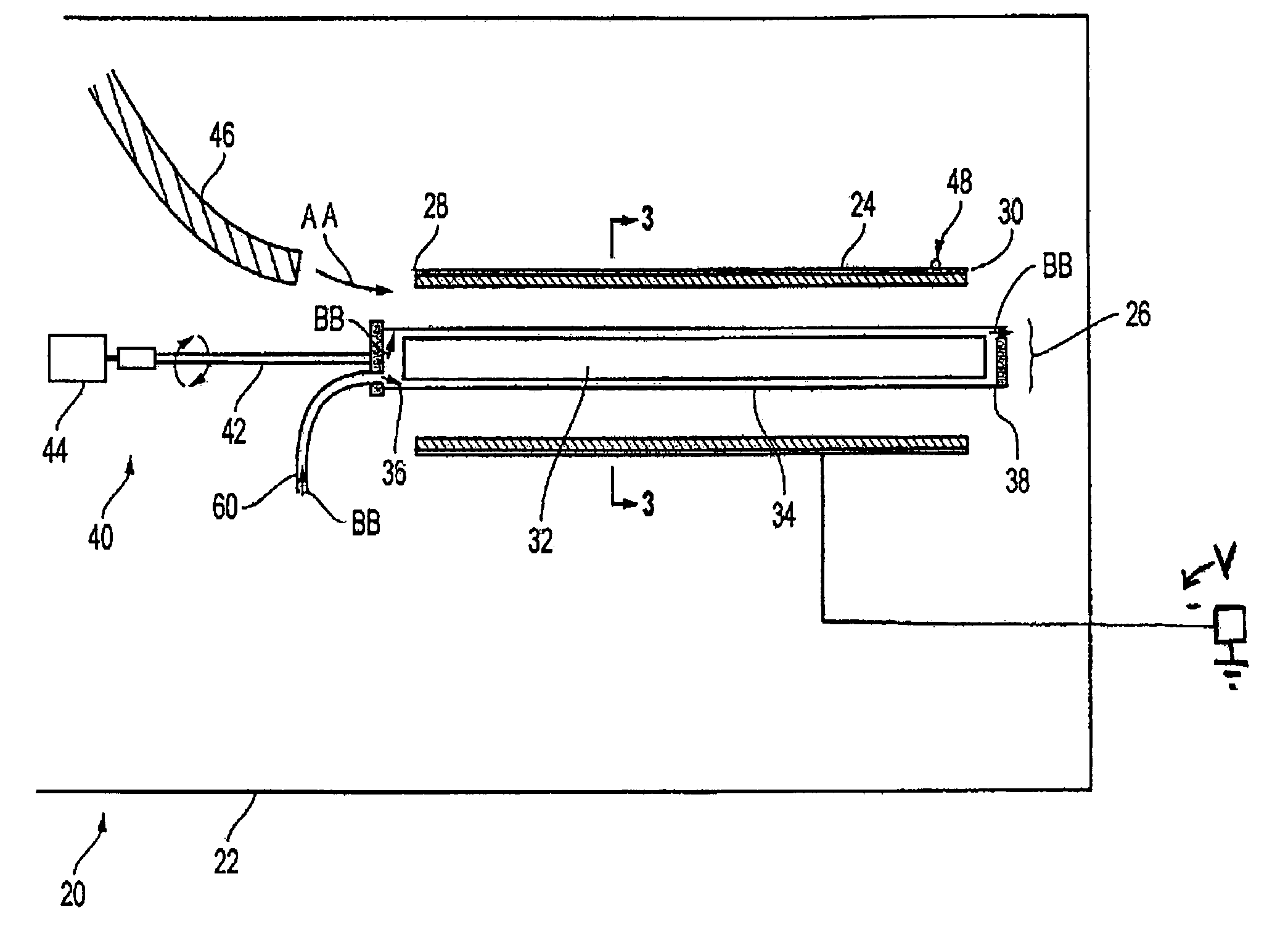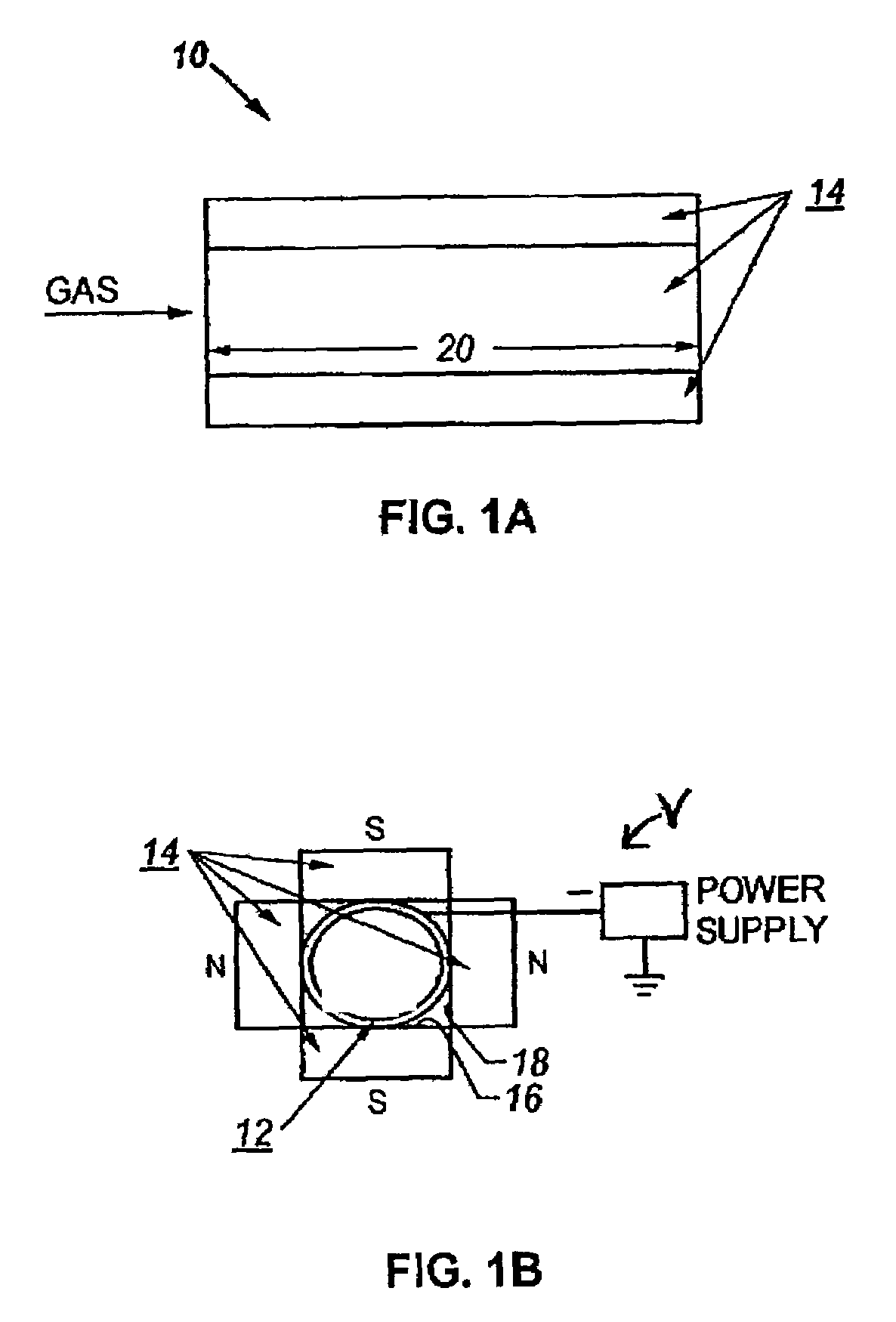Method for depositing coatings on the interior surfaces of tubular structures
a tubular structure and interior surface technology, applied in the field of tubular structure coating, can solve the problems of becoming more and more difficult to deposit a substantially uniform coating over the entire interior surface, and most methods simply fail to achieve the effect of achieving uniformity
- Summary
- Abstract
- Description
- Claims
- Application Information
AI Technical Summary
Benefits of technology
Problems solved by technology
Method used
Image
Examples
example 1
[0045]A non-ferromagnetic tube having a length of 16.2 cm and a diameter 1.27 cm (an aspect ratio of 12) was placed in a vacuum chamber. A magnetic assembly was placed lengthwise into the tube. The pressure in the vacuum chamber was pumped to 1.5×10−5 torr. A flow of 5 standard cubic centimeters per minute (SCCM) of argon was introduced to a pressure of 15 millitorr. A pulse frequency of 3 kHz with a pulse width of 20 microseconds was applied to bias the tube at 4 kV for about 30 minutes. The argon gas was turned off, and a combination of gases (SiH4, CH4, C2H2, N2 and Cr(CO)6) was introduced at 57 SCCM to obtain a pressure of 13 millitorr. A pulse frequency of 2 kHz at a pulse width of 20 microseconds was applied to bias the tube at 4 kV for about 30 minutes. The result was a well-bonded, substantially uniform + / −5–6 micrometer coating of silicon, silicon nitrides, silicon carbides, diamond-like carbon and carbonitrides covering the interior surface of the tube.
example 2
[0046]A ferromagnetic tube having a length of 17.1 cm and a diameter 1.9 cm (an aspect ratio of 37) was placed in a vacuum chamber. A magnetic assembly was placed lengthwise into the tube. The pressure in the vacuum chamber was pumped to 1.5×10−5 torr. A flow of 5 standard cubic centimeters per minute (SCCM) of argon was introduced to a pressure of 15 millitorr. A pulse frequency of 3 kHz with a pulse width of 20 microseconds was applied to bias the magnet assembly at 4 kV for about 30 minutes. The argon gas was turned off, and a combination of gases (SiH4, CH4, C2H2, N2 and Cr(CO)6) was introduced at 57 SCCM to obtain a pressure of 13 millitorr. A pulse frequency of 2 kHz at a pulse width of 20 microseconds was applied to bias the tube at 4 kV for about 30 minutes. The result was a well-bonded, substantially uniform + / −5–6 micrometer coating of silicon, silicon nitrides, silicon carbides, diamond-like carbon and carbonitrides covering the interior surface of the tube.
PUM
| Property | Measurement | Unit |
|---|---|---|
| vacuum pressure | aaaaa | aaaaa |
| aspect ratio | aaaaa | aaaaa |
| aspect ratio | aaaaa | aaaaa |
Abstract
Description
Claims
Application Information
 Login to View More
Login to View More - R&D
- Intellectual Property
- Life Sciences
- Materials
- Tech Scout
- Unparalleled Data Quality
- Higher Quality Content
- 60% Fewer Hallucinations
Browse by: Latest US Patents, China's latest patents, Technical Efficacy Thesaurus, Application Domain, Technology Topic, Popular Technical Reports.
© 2025 PatSnap. All rights reserved.Legal|Privacy policy|Modern Slavery Act Transparency Statement|Sitemap|About US| Contact US: help@patsnap.com



